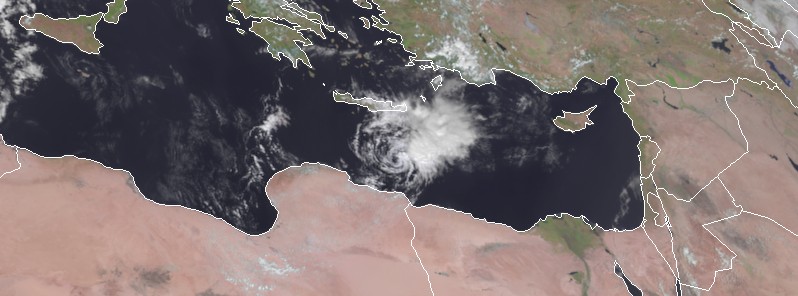Widespread destruction after Medicane Cassilda (Ianos) strikes Greece

Medicane Cassilda (Ianos) made landfall in Argostoli, Kefalonia, western Greece at 02:20 UTC on September 18, 2020, with maximum sustained winds up to 110 km/h (70 mph), gusts to 135 km/h (85 mph), and heavy rain.
- Widespread destruction was reported.
- At least 3 people have been killed and one is still missing. Nearly 1 000 were rescued.
- The storm moved through central Greece after striking the Ionian islands and exited back into the Mediterranean Sea.
- Cassilda is now weakening on its way toward the Libya-Egypt border region.
Cassilda caused widespread infrastructural damage, downed trees and bridges, disrupted traffic, damaged roads, homes and buildings, sank boats, and left thousands of homes without power.
Ionian Sea islands of Zakynthos, Kefalonia, and Ithaca, and areas around the cities of Kardiutsa and Farsala in central Greece are among the worst hit.
According to official estimates, 5 000 properties were flooded in Karditsa alone.
At least 3 people have been killed — one in Farsala, and two in Karditsa.
Rescuers are still searching for a woman who went missing in Mouzaki after the car she was driving got swept away by floodwaters.
Emergency service officials said they received over 2 500 calls for assistance and rescued nearly 1 000 people.
Five boats reportedly sank off Zakynthos and Lefkada. One boat believed to be carrying 55 migrants was in distress off the Peloponnese peninsula, southwest of Athens, and urged vessels in the area to assist. On Friday, waves off the coast of the western Peloponnese were as high as 7 m (23 feet).
Many farmers in central Greece said their crops and greenhouses were destroyed.
Cassilda weakened into Severe Medistorm on September 19 as it moved south and is now back in the Mediterranean, weakening on its way toward the Libya-Egypt border region.
Featured image: Cassilda/Ianos at 10:30 UTC on September 20, 2020. Credit: EUMETSAT/Meteosat-11, RAMMB/CIRA

This event as usual orchestrated by EISCAT in Tromso Norway creating high pressure systems and squeezing the consequential low pressure systems with the atmospheric water content greatly enhanced by aerosol spraying.